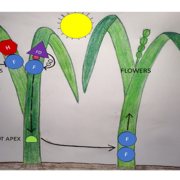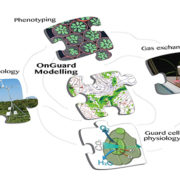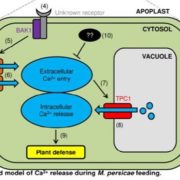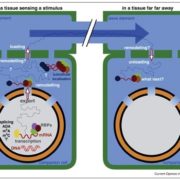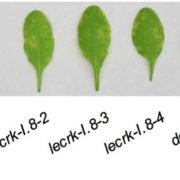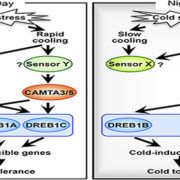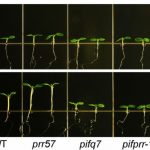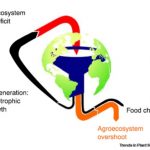A two-way molecular dialogue between embryo and endosperm is required for seed development ($) (Science)
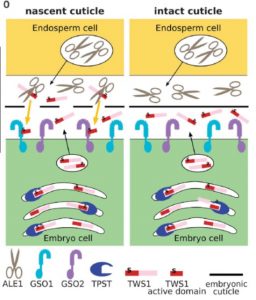 During seed formation, the developing embryo becomes covered with a water-impermeable cuticle. Several Arabidopsis mutants have been identified that are defective in cuticle formation and provide a framework for how it is formed. Doll et al. have added a missing piece to this puzzle. Briefly, embryo cells produce a secreted sulfated peptide that must be cleaved to become an active ligand for a embryonic cell-surface receptor required to promote cuticle formation. The authors show that the subtilase that cleaves the peptide precursor is produced by cells of the endosperm that surround the embryo. This suggests a model in which an incomplete cuticle allows peptide diffusion to the endosperm and back to activate cuticle formation, but when the cuticle is complete it prevents the precursor from reaching the activating subtilase, thus shutting off the cuticle-synthesis signaling. (Summary by Mary Williams) Science 10.1126/science.aaz4131
During seed formation, the developing embryo becomes covered with a water-impermeable cuticle. Several Arabidopsis mutants have been identified that are defective in cuticle formation and provide a framework for how it is formed. Doll et al. have added a missing piece to this puzzle. Briefly, embryo cells produce a secreted sulfated peptide that must be cleaved to become an active ligand for a embryonic cell-surface receptor required to promote cuticle formation. The authors show that the subtilase that cleaves the peptide precursor is produced by cells of the endosperm that surround the embryo. This suggests a model in which an incomplete cuticle allows peptide diffusion to the endosperm and back to activate cuticle formation, but when the cuticle is complete it prevents the precursor from reaching the activating subtilase, thus shutting off the cuticle-synthesis signaling. (Summary by Mary Williams) Science 10.1126/science.aaz4131


